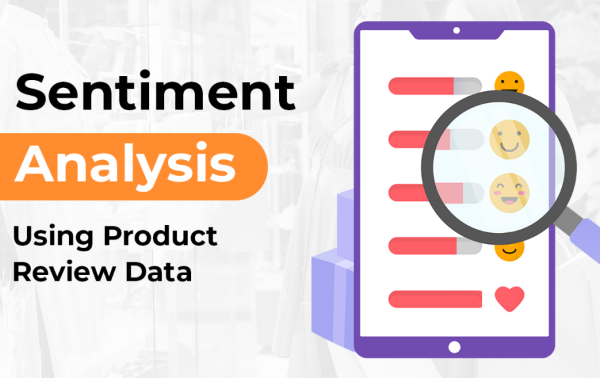Everyone knows what it is like to see that one item feels like it was designed with them in mind. Ideally, all companies should tailor-make products for customers. To make this goal achievable, a clear idea of who your customers are and what they want is essential. Sentiment analysis provides a glimpse into these customer preferences.
What Is Sentiment Analysis?
Sentiment analysis is interpreting data and determining the attitude of the person who created it. This is often done through AI tools that automatically evaluate a text and assign emotions to it. Later in the article are tips for extracting sentiment analysis using product review data.

The material for sentiment analysis is usually user-generated texts on social media platforms, review sites, customer service chat scripts, and product pages on eCommerce sites. Because these tests are user-generated, they provide first-person insight into how individual customers think and feel about products, services, contract analysis and brands.
Once the data is collected from these sources and interpreted with sentiment analysis tools, marketers can conclude and create customer insights that direct product research, development, and marketing. There is no need to anticipate what customers want by guessing since sentiment analysis provides clear insights into consumer attitudes and actions.
It’s also worth noting that a Sentiment Analysis can also be used to further improve a company’s SWOT Analysis, which consists in assessing the SWOT (Strength, Weakness, Opportunity, and Threat) of a business decision. Click the link ahead if you’re interesting in knowing more about what is a SWOT Analysis, and exactly what the whole process behind consists of.
The Importance of Product Reviews
People like to express their opinions and describe their experiences. This applies to shopping, as well as many other areas. There is a reason why social media is full of pictures of entrees in restaurants, lengthy descriptions of mishaps at the shopping mall, or enthusiastic posts about a great new product. Consumers are hard-wired to provide feedback.
Persuading the customer to provide that feedback directly to the company should be a goal of every marketer. Encouraging satisfied customers to leave reviews is integral to this strategy. Automizing requests for reviews is a good start. Personalizing these requests in a way that appeals directly to the customer is ideal. Offering incentives and sharing reviews on social media also encourages feedback.
It isn’t enough to get reviews. A company has to strive for good reviews. This means personally asking satisfied customers to leave reviews. A few positive reviews left by those who were contacted personally may be more impactful than scores of star ratings from pop up surveys. When making the personal request, remind them why reviews are essential for your business. If they have a sense of product loyalty, satisfied customers are likely to answer the call.
How to Identify Customer Sentiment Using Product Review Data
Although from the point of view of brand reputation, it is essential to encourage positive reviews, for the sake of analyzing customer sentiment, negative and lukewarm reviews are just as important as positive ones. Every business owner hopes for mainly positive reviews, but negative feedback can be just as informative.

When analyzing customer reviews, use a large sample. Just as in other research areas, having a large sample is one of the best indicators of reliable results. If a product doesn’t have good reviews for performing a meaningful analysis, encourage more reviews through requests and incentives until there is a decent sample size.
Extracting the text of the review is the next step. This may require special tools, such as a proxy server of a web scraper. In addition, there are tools that clean up the text for efficient analysis. When the text is ready, sentiment analysis tools will evaluate the text and interpret the emotions and the attitudes implied by the text.
Sentiment analysis tools employ dictionaries that guide the understanding of certain words and phrases. Advanced tools may even be able to pick up nuances, such as identifying sarcasm by context rather than the tone of voice as humans do in real-time. To each text, there is a numerical rating ranging from totally positive and totally negative, with many ratings in between.
Once sentiment analysis is completed, interpreting the results is the next step. This requires looking at the scores and measuring whether most of the responses were positive, negative, or somewhere in between. Creating a timestamp is essential for identifying specific time-related factors that may have influenced attitudes.
Sentiment analysis provides more color and detail than the simple analysis of traffic and visits. For instance, a certain brand may receive a sudden spike of mentions on Twitter, which can seem like a terrific development. However, sentiment analysis may indicate that the brand is being discussed because people are ridiculing and ad or there is controversy over one of its products or spokespeople.
Mere traffic without context may tell us very little, whereas sentiment analysis gives the full picture.
Sentiment Analysis and Product Development
Selling that item that customers are waiting for is the objective of every business. Making this happen has as much to do with understanding the prospective customers’ thoughts and feelings as it does the nature of the product. Sentiment analysis provides a window into consumer attitudes and informs product development and marketing.





